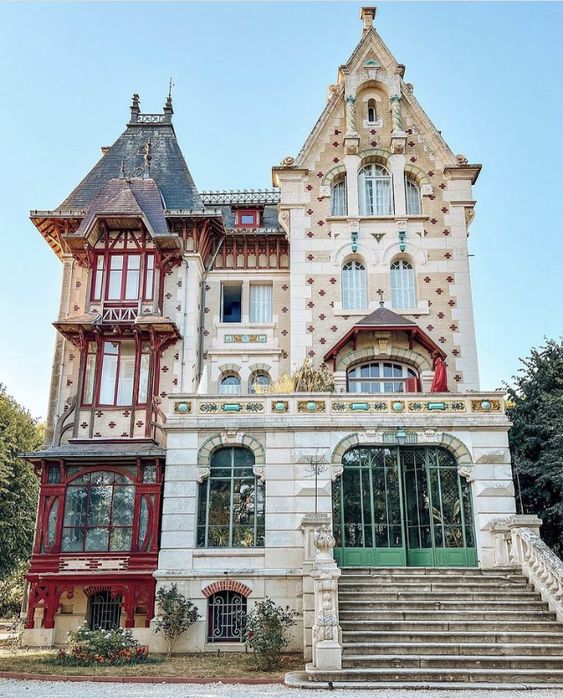#16594. Eclectic Facade of a Historic Mansion: Blend of Neo-Gothic, Art Nouveau, and Half-Timbered Elements

This is an impressive example of eclectic architecture from the late 19th - early 20th century, combining elements of Neo-Gothic, Art Nouveau, and traditional French regional style. The building's facade represents a true architectural masterpiece with pronounced asymmetry and rich decorative ornamentation.
The right part of the structure is designed in a more classical style with a pointed pediment characteristic of Gothic architecture. The facade is adorned with a regular pattern of decorative elements - diamond-shaped inserts of contrasting color, creating a checkerboard effect. The window openings of the upper floors have arched completions and are framed with decorative casings.
The left wing of the building is executed in a more playful style with half-timbered elements and rich burgundy-colored wooden parts. Particularly noteworthy are the bay windows with large glass panels and decorative carvings, adding volume and expressiveness to the facade. This part of the house is crowned with an elegant turret with a complex roof structure.
The ground floor is constructed of light-colored stone with large glazed openings and an elegant staircase leading to the entrance. The decorative elements - cornices, balustrades, window frames - demonstrate the highest level of craftsmanship.
When designing the facade of a modern house, many elements of this historical building can serve as inspiration: asymmetrical composition, contrasting combination of materials, decorative inserts and patterns, bay windows and turrets to create an expressive silhouette. Even on a smaller scale and with a contemporary interpretation, such techniques can give a house individuality and character.